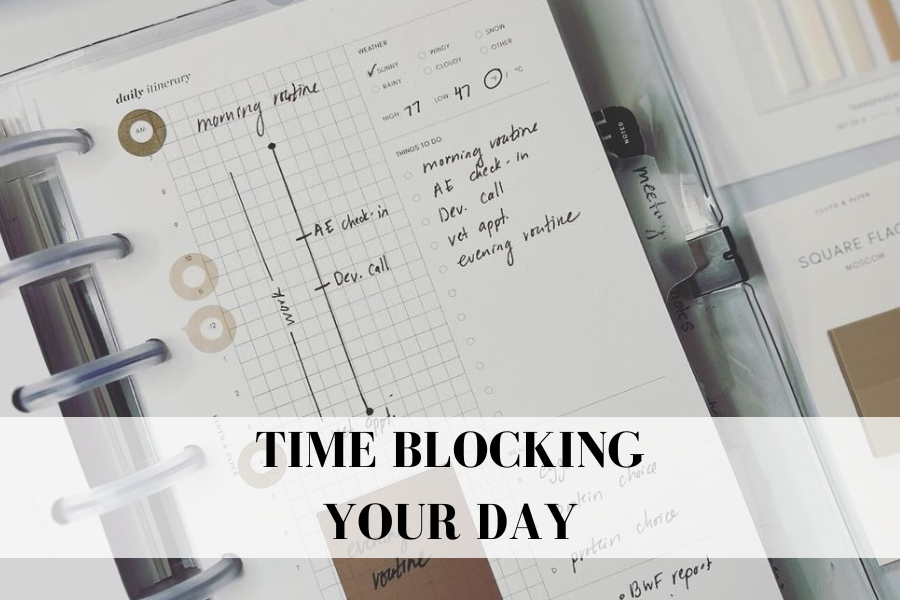
5 Essential Tips for Time Blocking Your Day to Skyrocket Productivity
Before time blocking, my days felt chaotic and overwhelming. I was constantly juggling tasks, meetings, and to-do lists, feeling like I was always behind.
Discovering time blocking was a revelation. It brought structure and clarity to my days, allowing me to focus deeply on each task without feeling pulled in a million directions. I was not only more productive but also found time for hobbies, family, and self-care.
In this blog post, I’m excited to share the practical tips and insights I’ve gained from my time-blocking journey.
You’ll learn how to bring order to your chaotic days, boost your productivity, and carve out time for the things that matter most.
Let’s dive in!
This is a curated list of my favourite time blocking resources and tools:
- Books:
- Eat That Frog! by Brian Tracy
- Deep Work by Cal Newport
- Websites and Blogs:
- YouTube Channels:
- Podcasts:
- The Productivity Show by Asian Efficiency
- Beyond the To-Do List
My definition and understanding of time blocking
Time blocking is like your personal roadmap for the day. Here’s what it means to me:
- Divide & Conquer:
- Break your day into blocks of time, each dedicated to a specific task or group of tasks.
- Focus is Key:
- This method helps you focus on one thing at a time, minimizing distractions.
- More Than Productivity:
- It’s not just about getting things done; it’s about making time for what matters most.
- Be Intentional:
- Actively shape your day to align with your goals and priorities.
The benefits I’ve experienced from this method
Time blocking has been a game-changer for me. Here are some of the benefits I’ve personally experienced (and you can too!):
- Clarity & Structure:
- My days are now clearly mapped out, giving me a solid structure to follow.
- Boosted Productivity:
- Focusing on one task at a time has significantly boosted my productivity.
- Less Stress:
- The overwhelming feeling of juggling multiple tasks has been replaced with a sense of calm.
- More ‘Me’ Time:
- I’ve been able to carve out dedicated time for hobbies, family, and self-care.
- Goal Alignment:
- My daily activities are now in line with my long-term goals and priorities.
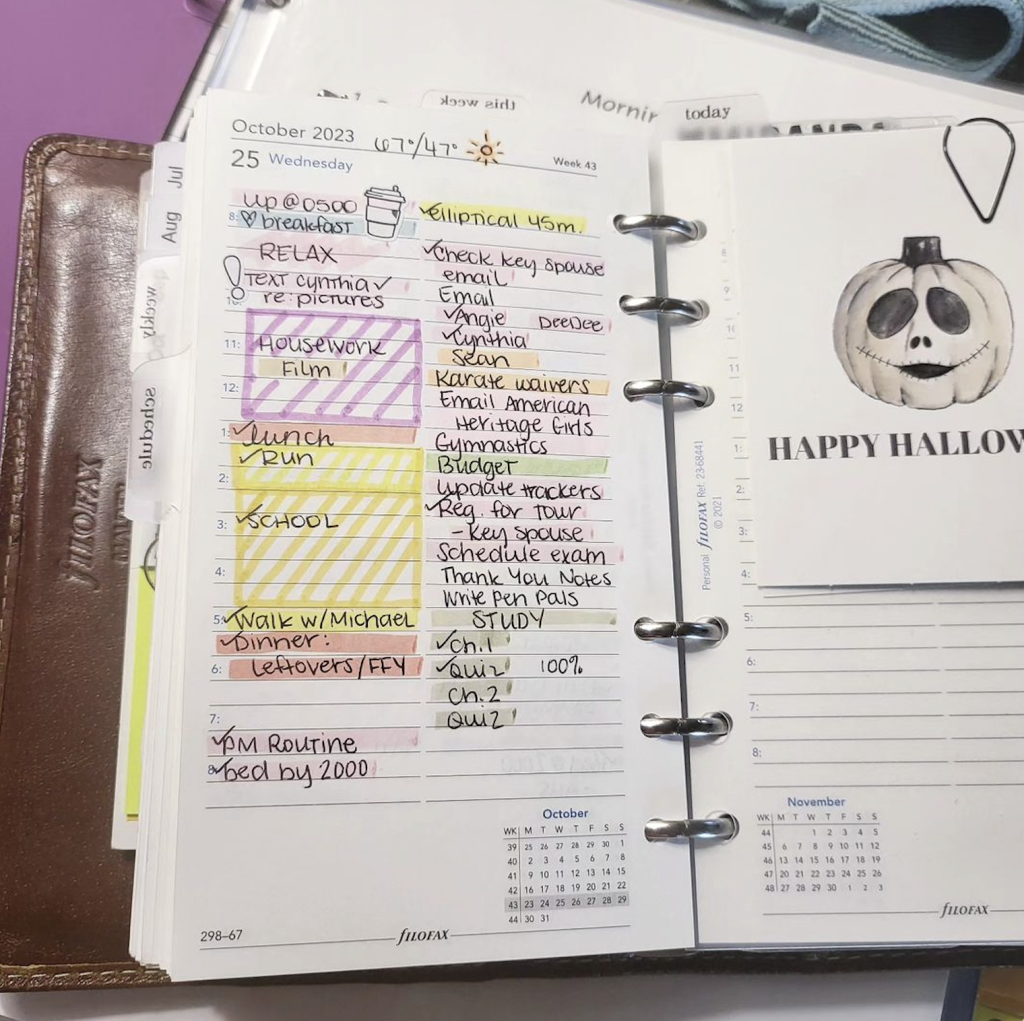
Step 1: Choosing Your Tasks
Choosing the right tasks to time block is the first step to unlocking the full potential of this method. It’s like laying the foundation for a house; get it right, and everything else falls into place.
Let’s dive into how you can select tasks that will set you up for success.
How to select tasks that are suitable for time blocking
Selecting the right tasks for time blocking is key. Here’s how I do it:
- Prioritize:
- Start by listing out all your tasks and prioritize them. What needs to be done now, and what can wait?
- Batch Similar Tasks:
- Group similar tasks together. Answering emails and making phone calls? Batch them into one block.
- Consider Energy Levels:
- Match tasks with your energy levels. Save your most challenging tasks for when you’re at your peak energy.
- Be Realistic:
- Be realistic about how much time each task will take. Don’t set yourself up for failure by underestimating.
- Don’t Forget Downtime:
- Remember to include some downtime. We all need a few moments to relax and recharge.
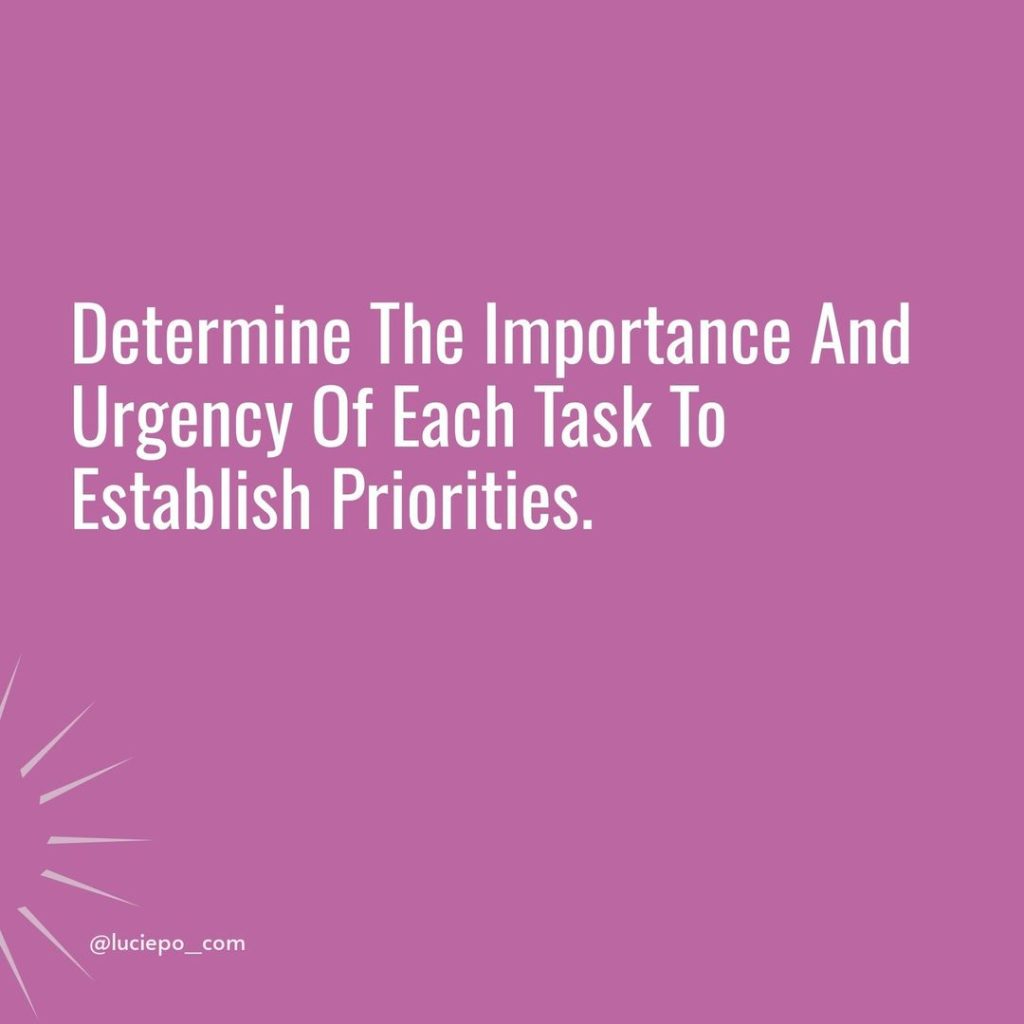
Breaking down larger tasks into manageable chunks
Breaking down larger tasks into manageable chunks is like turning a mountain into a series of small hills. It makes the task feel less overwhelming and more achievable.
- Identify the Main Task:
- Start by clearly defining what the main task is. What’s the end goal?
- List Out Sub-Tasks:
- List out all the sub-tasks that make up the main task. Think of each sub-task as a step towards completing the main task.
- Estimate Time for Each Sub-Task:
- Estimate how much time each sub-task will take. Be realistic and give yourself some buffer time.
- Create Time Blocks:
- Create time blocks for each sub-task. Now, instead of one big task, you have a series of smaller, more manageable tasks.
- Celebrate Small Wins:
- As you complete each sub-task, celebrate the small win. It will keep you motivated and on track.

Step 2: Allocating Your Time
Once you’ve got your tasks laid out, the next step is to allocate your time effectively. This is where the magic really happens, as you start to see your day take shape in a way that feels manageable and achievable.
How much time to allocate to each task
Figuring out how much time to allocate to each task can feel like a puzzle. But don’t worry, I’ve got some tips to help you solve it:
- Start with Past Experience:
- Think about how long similar tasks have taken you in the past. Use that as a starting point.
- Consider Task Complexity:
- The more complex the task, the more time you’ll likely need. Don’t underestimate!
- Add Buffer Time:
- Always add a buffer for unexpected interruptions or challenges that might arise.
- Be Realistic:
- It’s better to overestimate than underestimate. If you think a task will take an hour, allocate an hour and a half just to be safe.
- Use a Timer:
- When you start a task, set a timer for the allocated time. It will keep you focused and on track.
Check out my blog post about the Pomodoro timer that I personally use for timing my tasks
For example, if I’m writing a blog post, I’ll think about how long my previous posts have taken me, consider the complexity of the topic, add some buffer time, and then set my timer. It’s a simple but effective way to ensure I’m using my time wisely.
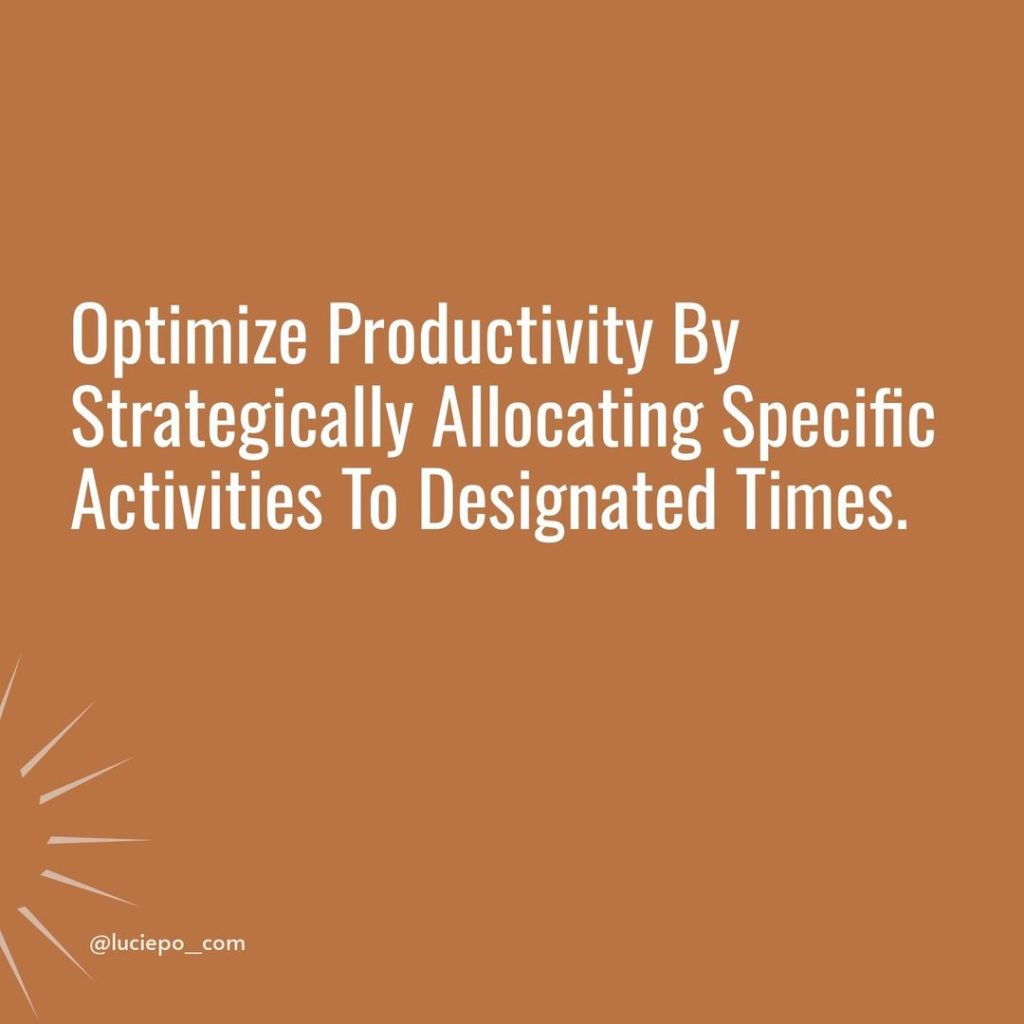
Tools and apps to support you in this process
There are some fantastic tools and apps out there that have been my sidekicks in this time-blocking journey. Here are my favorites:
- Google Calendar:
- My go-to for scheduling and visualizing my time blocks. It’s user-friendly and syncs across all devices.
- Toggl:
- A great tool for tracking how much time I actually spend on tasks. It’s been an eye-opener!
- Forest:
- This app helps me stay focused by letting me plant a virtual tree that grows while I work on a task. If I pick up my phone, the tree dies. Talk about motivation!
- Notion:
- My all-in-one workspace for organizing tasks, taking notes, and more. It’s customizable and keeps everything in one place.
- Todoist:
- A simple but powerful task manager that helps me keep track of what needs to be done.
Step 3: Staying Focused
Now that you’ve got your tasks laid out and your time allocated, the next step is to hone in on staying focused. This is where you’ll really start to see the benefits of time blocking, as you train your brain to zero in on the task at hand. Let’s explore some strategies to help you maintain laser-like focus.
Multitasking and distractions can be the biggest roadblocks to staying focused. Here are some strategies I’ve found helpful:
- Single-Tasking:
- Focus on one task at a time. It might seem counterintuitive, but single-tasking actually makes you more efficient.
- Turn Off Notifications:
- Those pings and dings from your phone or computer can be major distractions. Turn them off and watch your focus improve.
- Create a Dedicated Workspace:
- Having a clean, organized space just for work can do wonders for your focus.
- Use the Pomodoro Technique:
- Work for 25 minutes, then take a 5-minute break. It’s a simple but effective way to maintain focus.
- Set Clear Boundaries:
- Let those around you know that you’re in focus mode and ask them to respect your time.
For example, when I’m working on a blog post, I turn off all notifications, set a timer for 25 minutes, and let my family know I need uninterrupted time. It’s made a world of difference in my ability to focus and get the job done. Give these strategies a try and see how they work for you!

Step 4: Embracing Breaks
Once you’re in the groove of focusing on your tasks, it might be tempting to skip breaks. But trust me, embracing breaks is a crucial part of the time-blocking process.
Why are breaks an essential part of time blocking
Breaks are like the secret sauce of time blocking. Here’s why they’re essential:
- Prevent Burnout:
- Continuous work can lead to burnout. Breaks give your mind a chance to rest and recharge.
- Boost Creativity:
- Ever notice how great ideas pop up when you’re not actively thinking about work? Breaks can spark creativity.
- Improve Focus:
- Just like athletes need rest between sets, your brain needs breaks to maintain focus.
- Increase Productivity:
- It might seem counterintuitive, but taking breaks can actually make you more productive in the long run.
- Enhance Decision-Making:
- A clear mind makes better decisions. Breaks help clear the mental fog.
During my breaks, I like to step away from my desk, stretch, and get some fresh air. It’s amazing how just a few minutes can leave me feeling refreshed and ready to tackle the next task. So, don’t skip those breaks; embrace them!
Ways to spend your break time to recharge
Break time is your chance to recharge and reset. Here are some of my favorite ways to spend it:
- Step Outside:
- Fresh air and a change of scenery can do wonders. I love taking a quick walk around the block.
- Stretch or Exercise:
- A few simple stretches or a quick workout can get the blood flowing and boost your energy.
- Listen to Music or a Podcast:
- Putting on my favorite tunes or an interesting podcast is a great way to relax and unwind.
- Practice Mindfulness:
- A few minutes of deep breathing or meditation can help clear your mind and reduce stress.
- Have a Snack or Hydrate:
- Sometimes a small snack or a glass of water is all you need to feel refreshed.
Find what works for you and make it a part of your break-time routine. Your mind and body will thank you!
Step 5: Reflecting and Adjusting
The final step in mastering time blocking is reflecting on what worked and what didn’t, and then making adjustments accordingly. This is where you fine-tune your approach to make it truly your own. Let’s explore how you can become a time-blocking pro through reflection and adjustment.
The role of reflection in time blocking routine
Reflection is the compass that guides your time-blocking journey. Here’s why it’s so crucial:
- Identify What Works:
- Reflecting helps you see what’s working well, so you can do more of it.
- Spot Areas for Improvement:
- It also highlights areas where you might be struggling, so you can make adjustments.
- Track Your Progress:
- Regular reflection allows you to track your progress over time.
- Stay Aligned with Goals:
- It ensures that your daily activities are in line with your long-term goals.
- Celebrate Wins:
- Don’t forget to celebrate your successes, no matter how small!
At the end of each week, I take a few minutes to review my time blocks. I look at what I accomplished, where I could have been more efficient, and how my activities aligned with my goals. This reflection is key to continuously improving my time-blocking routine. Give it a try!
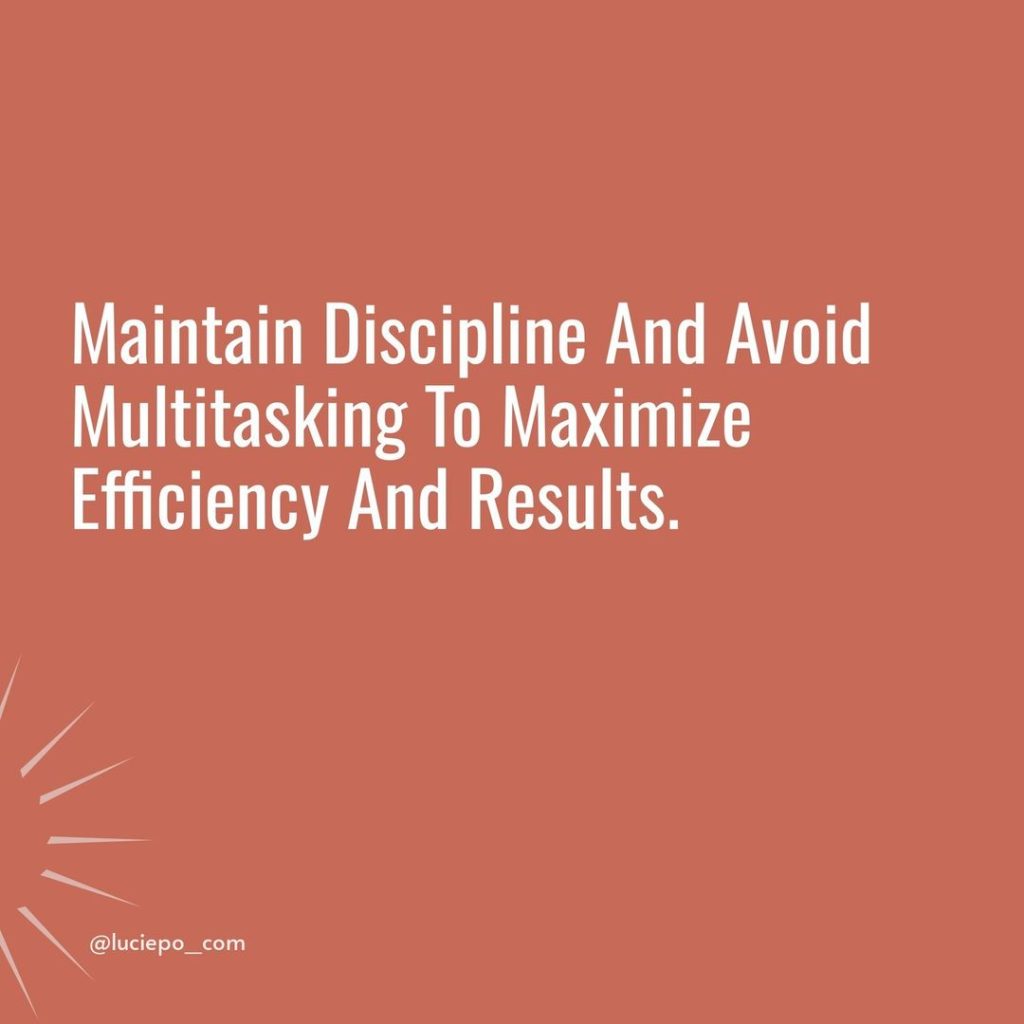
How to adjust your approach based on what works and what doesn’t
- Be Flexible:
- If something isn’t working, don’t be afraid to change it. Flexibility is key.
- Experiment:
- Try different time blocks or tasks until you find what works best for you.
- Ask for Feedback:
- Sometimes an outside perspective can provide valuable insights.
- Keep a Time Log:
- Track how you spend your time to see where you can make improvements.
- Stay Patient:
- It might take some time to find the perfect routine. Be patient and keep experimenting.
For example, I realized that my energy dips in the afternoon, so I adjusted my time blocks to tackle more challenging tasks in the morning. It made a huge difference in my productivity. Don’t be afraid to make adjustments until you find what works best for you.
Practical tip: When I first started time blocking, I tried to schedule every minute of my day. It was too much! So, I scaled back and started with just a few key tasks. It made the process much more manageable and enjoyable.
How time blocking can be tailored to different lifestyles and work environments
Time blocking is your flexible friend, ready to adapt to your lifestyle and work needs. Whether you’re in a 9-to-5, freelancing, parenting, studying, or working remotely, this will show you how to make time blocking work for you.
For the 9-to-5er:
- Block out time for specific work tasks, meetings, and email checking. Don’t forget to include breaks!
For the Freelancer:
- Use time blocks to juggle different client projects and deadlines. Make sure to allocate time for self-promotion and professional development.
For the Stay-at-Home Parent:
- Time blocks can help you manage household tasks, childcare duties, and personal time. Be flexible and adjust as needed.
For the Student:
- Use time blocks to balance classes, study sessions, and extracurricular activities. Don’t forget to include downtime!
For the Remote Worker:
- Time blocks can help you create a clear separation between work and home life. Make sure to include time for virtual check-ins with your team.
For the Night Shift Worker:
- Adapt time blocks to fit your unconventional work hours. Make sure to include time for sleep and self-care.

Frequently Asked Questions
What is time blocking, and how can it help with time management?
Time blocking is a time management technique where you divide your day into specific blocks of time dedicated to different tasks or activities. It helps ensure you have enough time for important work and can complete tasks efficiently.
How do I start time blocking my day?
Start by identifying the most important tasks you need to complete and assigning specific time blocks to them on your calendar. Use a digital calendar app or a physical planner to organize your time slots effectively.
Why is time blocking a good idea for high schoolers?
Time blocking allows you to focus on one task at a time, making it easier to complete assignments and study effectively. It also helps you make time for leisure activities and ensures you have enough time for schoolwork, extracurriculars, and family time.
What are some common mistakes to avoid when time blocking?
One common mistake is not setting aside enough time for tasks, leading to rushed work. Another is not accounting for travel time or breaks between activities, which can disrupt your schedule. It’s important to be realistic and flexible with your time-blocking method.
How can time blocking improve work-life balance?
By dedicating specific blocks of time to work, study, and leisure activities, time blocking helps create a balance between academic responsibilities and personal time. It also reduces stress by providing a structured approach to managing your day.
What are some tips for maximizing productivity with time blocking?
Focus on completing one task at a time during specific time blocks, avoid multitasking, and take short breaks between blocks to recharge. Prioritize the most important tasks during your peak focus time for better results.
How do successful people like Elon Musk and Bill Gates use time blocking?
They use time blocking to schedule their day efficiently, allocate time for creative work, meetings, and personal activities. It helps them stay organized, focused, and in control of their time, leading to better work-life balance and productivity.
Can I use time blocking for school projects or studying?
Absolutely! Time blocking is a great way to allocate time for different subjects, homework assignments, and study sessions. You can also use it to set aside time for extracurricular activities and family time.
What’s the best way to set up a time-blocked schedule?
Start by listing all your tasks and activities for the day, then allocate specific blocks of time to each task based on priority and estimated time needed. Be flexible and adjust your schedule as needed, especially if new tasks or events come up.
How can time blocking help me avoid procrastination?
By breaking down tasks into smaller chunks of time and setting deadlines for each, time blocking creates a sense of urgency and accountability. It makes it easier to get started on tasks and stay focused until they’re completed.





